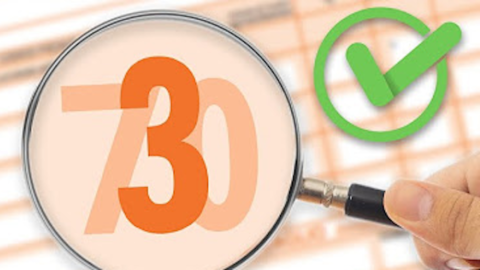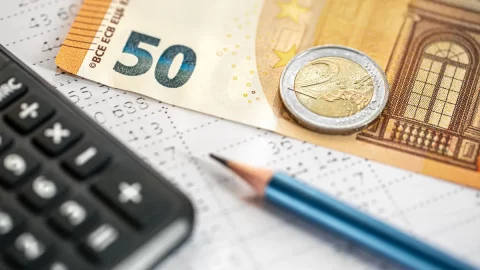A revolution is coming for the people of small Italian VAT numbers. The 2015 Stability Law introduces a new flat-rate regime that replaces the previous "minims" and will be applicable only to natural persons, not to companies. Important innovations also concern the calculation methods and the regime envisaged for new entrepreneurs. Below we analyze the main innovations introduced by the manoeuvre, remembering however that the text has yet to be examined by Parliament.
1) WHAT RATE FOR THE SUBSTITUTE TAX?
The substitute tax rate rises from 5 to 15% and replaces VAT, Irap, personal income tax and surtaxes.
2) WHO WILL BENEFIT?
The new flat rate is reserved for natural persons (all companies and associations between professionals are excluded), who must satisfy two requirements with reference to the previous tax period:
– gross total expenses not exceeding 5 euros for employees, para-subordinates and associates in shareholdings (the fees paid on an occasional basis for commercial or professional activities not habitually exercised are excluded from the calculation);
– expenses not exceeding 20 thousand euros for stock of capital goods (those used promiscuously are calculated at 50%).
3) WHICH SCHEMES ARE SUPPRESSED?
The Stability Law provides for the abrogation of three regimes:
– the regime of new productive initiatives;
– the favorable tax regime;
– the facilitated accounting regime.
From 2015, no taxpayer will be able to start taking advantage of one of these regimes, but those who were in the advantageous tax regime in 2014 will be able to choose to continue to take advantage of them until expiry, i.e. until the end of the five years or the 35th year of age. In the other two cases, from next year those who meet the requirements will pass directly to the flat-rate scheme.
4) IS THE LIMIT OF 5 YEARS UNDER 35 YEARS OF AGE STILL EXISTING?
No. There is no longer any time limit for the new flat-rate scheme.
5) HOW IS THE TAXABLE INCOME CALCULATED?
The taxable income to which to apply the 15% rate is calculated by applying a coefficient to the turnover. Each professional category is assigned a different coefficient and a different maximum turnover ceiling:
– professionals: maximum turnover of 15 thousand euros, coefficient 78%;
– artisans and non-food companies: maximum turnover of 20 thousand euros, coefficient 67%;
– traders (wholesale and retail): maximum turnover 40 thousand euros, coefficient 40%;
– food and beverage vendors: maximum turnover of 30 thousand euros, coefficient 40%;
– peddler of other products: maximum turnover of 20 thousand euros, coefficient 54%;
– hotels and restaurants: maximum turnover of 40 thousand euros, coefficient 40%.
6) WHAT TAX SIMPLIFICATIONS DOES THE FLAT-RATE SCHEME INVOLVE?
Those adhering to the flat-rate regime remain subject to income meter control, but are no longer required to fulfill the registration and accounting records obligations for indirect tax purposes. You are therefore exempt from the declaration obligations for Irap purposes and you are no longer subject to checks with sector studies.
7) HOW TO PAY THE SUBSTITUTE TAX?
The maneuver provides that the payment is made with terms and conditions similar to those of the Irpef. The payment is then made by 16 June, or by 16 July with a 0,4% increase.
8) WHAT CHANGES FOR NEW ENTREPRENEURS?
As mentioned in point 3, from 2015 new entrepreneurs will no longer be able to make use of the regime of new production initiatives, which is repealed, and anyone who is in that regime in 2014 will automatically switch to the new lump sum, if they meet the requirements. Furthermore, for startups, taxable income is reduced by a third.
9) WHAT POSSIBLE CHOICES FOR SOCIAL SECURITY PAYMENTS?
Only those who carry out business activities (therefore professionals are excluded) will be able to calculate the contributions to be paid on the same taxable income for the flat-rate regime. This implies the overcoming of the "minimal" system for those enrolled in the management of craftsmen and traders at INPS, who will be able to choose not to calculate the contributions on the minimum income anymore, i.e. the thresholds on which up to now payments have always been due, even in case the actual income was even lower.
10) WHO IS THE NEW FLAT-RATE SCHEME FOR?
Not to everybody. The convenience must be assessed on a case-by-case basis, because it depends on various factors: the professional category to which they belong (with relative coefficient and turnover ceiling), management costs and social security contributions (which no longer have any relevance in calculating taxable income ), the possibility of taking advantage or not of the additional cut envisaged for startups.





